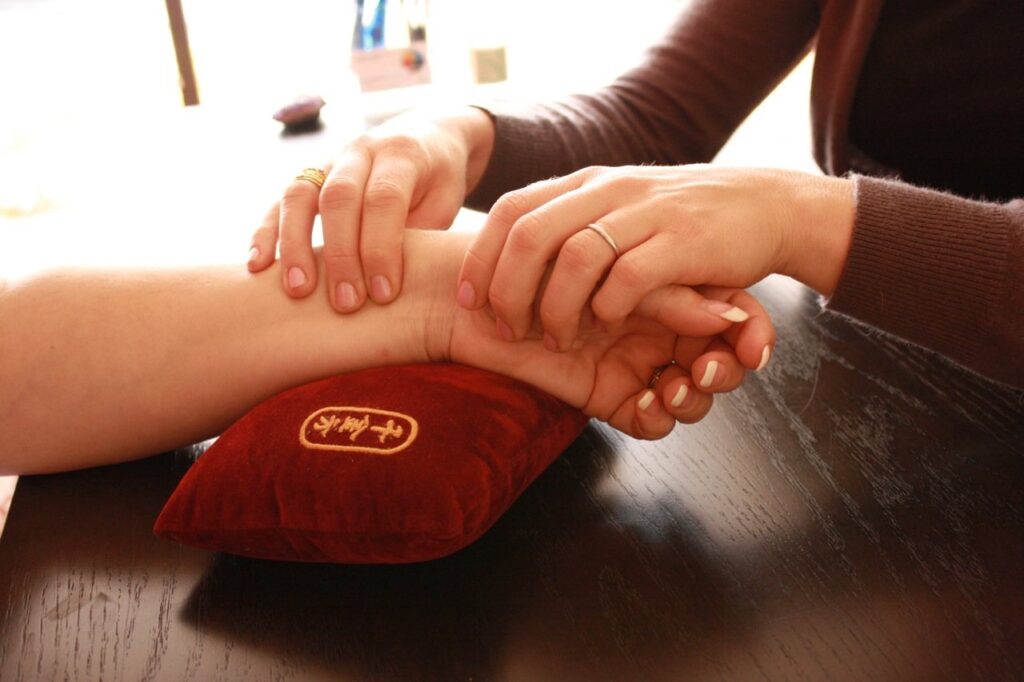Pulse diagnosis is a key diagnostic technique in Traditional Chinese Medicine (TCM) that allows practitioners to gather valuable information about a patient’s overall health and well-being. By assessing the quality, rhythm, and characteristics of the pulse, TCM practitioners can gain insights into the functioning of the internal organs, the state of Qi (vital energy), and the overall balance of Yin and Yang energies within the body. In this article, we explore the art of pulse diagnosis in TCM and its significance in understanding and treating various health conditions.
Understanding Pulse Diagnosis in TCM:
In TCM, the pulse is considered a reflection of the body’s internal state and provides valuable information about the flow of Qi, blood, and the overall condition of the organs. Pulse diagnosis involves palpating the radial pulse at the wrist using three fingers and assessing various aspects, including the pulse rate, depth, width, strength, and qualities such as slippery, wiry, weak, or irregular. Each pulse position along the radial artery corresponds to specific organs and meridians.
Key Aspects of Pulse Diagnosis:
- Pulse Quality: TCM recognizes several pulse qualities, each providing insights into the state of the body. These qualities include the depth (superficial or deep), width (wide or narrow), strength (strong or weak), and rhythm (regular or irregular) of the pulse. These qualities are interpreted in the context of the patient’s individual constitution and health condition.
- Pulse Positions: Pulse diagnosis involves palpating six pulse positions on both wrists, corresponding to specific organs and meridians in TCM. These positions include the Cun (proximal), Guan (middle), and Chi (distal) positions, each providing information about different aspects of the body’s functioning and health.
- Organ Function Assessment: By evaluating the pulse characteristics at each position, TCM practitioners can assess the functioning of specific organs. For example, the pulse at the Cun position reflects the condition of the Lung, the pulse at the Guan position relates to the Spleen, and the pulse at the Chi position corresponds to the Kidney.
Benefits and Applications of Pulse Diagnosis:
- Diagnostic Tool: Pulse diagnosis helps TCM practitioners gather important diagnostic information about a patient’s overall health, including identifying imbalances, identifying organ dysfunction, and assessing the overall state of Qi and blood circulation.
- Individualized Treatment: Pulse diagnosis allows for personalized treatment plans tailored to the unique needs of each patient. By understanding the specific imbalances and patterns identified through pulse diagnosis, TCM practitioners can develop targeted treatment strategies to restore balance and promote optimal health.
- Monitoring Progress: Pulse diagnosis is not only used for initial assessments but also serves as a valuable tool for monitoring the progress of treatment. Changes in pulse qualities over time can indicate improvements in the body’s internal balance and overall health.
- Prevention and Wellness: Pulse diagnosis is not limited to diagnosing existing conditions but can also be used for preventive purposes. By identifying subtle imbalances through pulse assessment, TCM practitioners can address them before they manifest as more significant health issues, promoting overall wellness and disease prevention.
Consultation with a TCM Practitioner:
Pulse diagnosis is a skill that requires extensive training and experience. It is essential to consult with a qualified TCM practitioner who is proficient in pulse diagnosis to receive an accurate assessment and appropriate treatment. The practitioner will consider multiple diagnostic techniques, including tongue examination and patient history, to develop a comprehensive understanding of the individual’s health condition.

Pulse diagnosis is an integral part of Traditional Chinese Medicine, providing valuable insights into the internal state of the body. By assessing the pulse qualities at various positions, TCM practitioners gain a deeper understanding of the body’s functioning, imbalances, and patterns. Pulse diagnosis helps guide individualized treatment plans, monitor progress, and promote overall wellness. Embracing the art of pulse diagnosis allows for a more comprehensive and holistic approach to healthcare, ensuring optimal balance and well-being.









